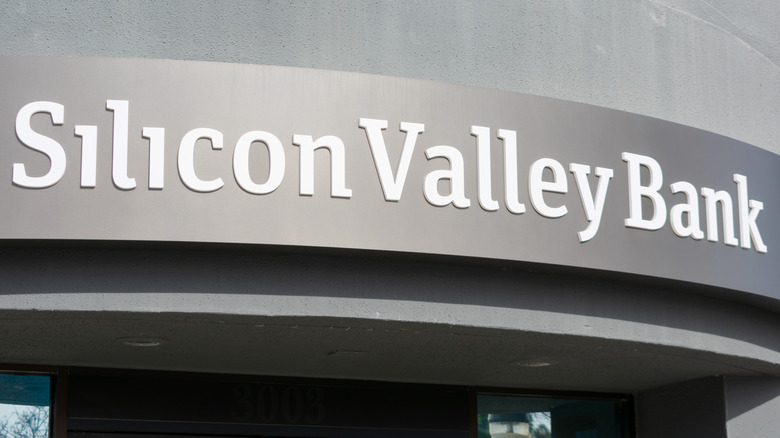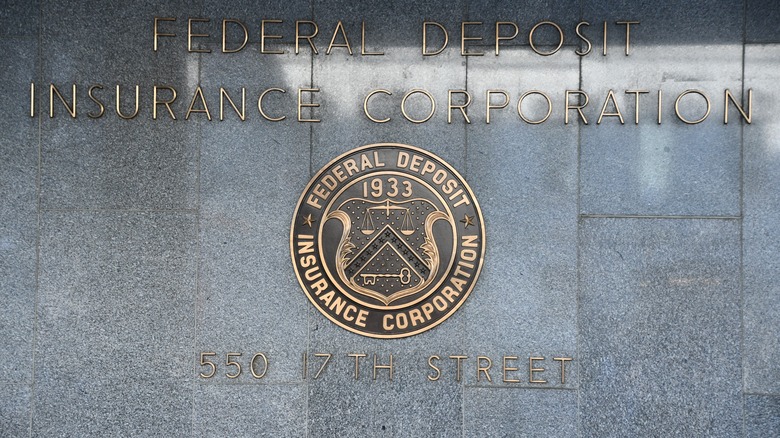What Exactly Is A Bank Run?
Silicon Valley Bank (SVB) in California and Signature Bank in New York state collapsed in March 2023, CNBC reports. The sudden collapse of SVB caused a ripple of panic across the economy, contributing to the so-called bank run at Signature. In the aftermath of those failures, federal regulators with the Federal Deposit Insurance Corporation (FDIC) took control of each institution to repay depositors and to forestall a system-wide banking crisis. Billions of dollars were lost in both cases.
Bank runs, such as what happened at SVB and at Signature, have occurred several times throughout banking history, most notably in 1929 in the lead-up to the Great Depression. Many also happened during the 2008 financial crisis with the sudden closing of Washington Mutual (WaMu) and Wachovia Bank, according to Investopedia. As The New York Times reports, the WaMu crisis was the biggest bank failure in U.S. history. No matter what might cause a bank run, the issue highlights the tenuous nature of modern banking, as well as the immense amount of consumer and depositor faith required to keep the modern economy afloat and operational.
Banks take in less money than they lend out
Central to how the modern banking system works, financial institutions such as Silicon Valley Bank (SVB) and Signature Bank are allowed to lend out more money than they have on hand, according to the Corporate Finance Institute. In a system called fractional reserve banking, banks only keep some of the total money from depositors and loan out the rest. When the system works as it should, institutions like banks and credit unions make enough income from interest charged on those loans and miscellaneous daily deposits to cover any potential withdrawals. As long as bank customers continue to deposit their money with a bank, trusting it will be there when they need it, then a bank remains viable.
If that faith is broken, though — which can happen for any number of microeconomic and macroeconomic reasons — and all the bank customers demand their money from the bank at the same time, which is more money than the bank has, the total amount of what's withdrawn can't be covered. When that happens, it's called a bank run and the institution fails. As news of a bank failure spreads such as with SVB and Signature, confidence at other institutions can falter, and given the interconnected nature of the modern economy, banking aftershocks happen. During the Great Recession, over 500 U.S. banks failed. The most recent U.S. bank failure happened in 2020 in the early days of the COVID-19 pandemic.
Modern bank runs are mostly silent
In the days of the Great Depression, depositors had to line up at banks to withdraw their money, but in the modern era of banking, most transactions are done online. For this reason, today's bank runs are sometimes called silent bank runs. To help prevent another banking crisis, the Federal Deposit Insurance Corporation (FDIC) was founded in the 1930s, funded by fees each bank pays annually. For this reason, all U.S. deposits are insured up to $250,000 should a bank fail, but anyone holding more than that amount at the institution can lose their money. With mostly wealthy corporations for clients, nearly none of SVB's deposits were insured, per Axios.
Over the decades since the Great Depression, federal banking regulations have varied, as some lawmakers push back on the rules claiming they are too restrictive, while others say banking regulations are not rigorous enough. In 2018, President Donald Trump revised regulations around how much small regional banks had to keep on hand. These changes worsened the SVB situation, in the opinion of many experts. Though relatively small, SVB held many assets for Silicon Valley tech firms and startups. Both SVB and Signature reportedly held large quantities of volatile crypto funds, which may have contributed to their instability.


